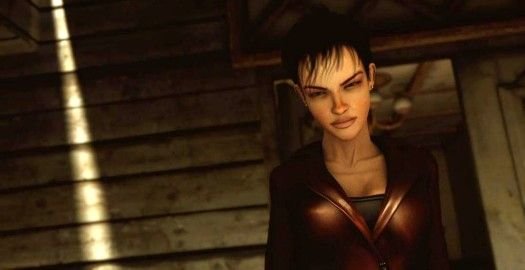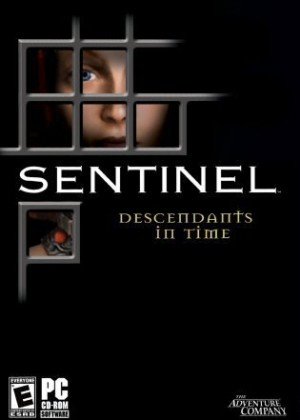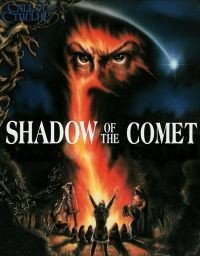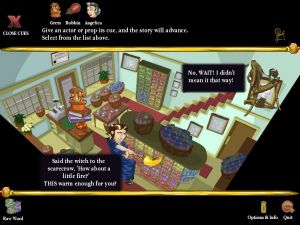Review for Still Life 2

There is a troubling beauty in death and violence, and this dichotomy has rarely been portrayed as seductively as in Still Life. 2005 brought adventure gamers a real treat; a dark and visually beautiful game that had players switching between 1920s Prague and modern day Chicago in trying to solve two seemingly related cases of twisted serial killings. The rub, however, was that Microïds hit financial trouble at that time and the development team was dissolved, finishing their swansong but leaving it without a conclusive ending.
Four years later, a revived Microïds have hired a new team, GameCo Studios, to finish the story and continue the Still Life legacy. The results are certainly more mixed than its acclaimed predecessor, but not altogether unsuccessful. The sequel picks up with Victoria McPherson, the FBI investigator from the first game, still on the trail of the masked killer, and brief memories from 2005 continue to be interspersed throughout a new case in 2009, with Vic tracking a criminal dubbed the “East Coast Killer” by TV reporter Paloma Hernandez. You also play segments as Paloma, who is kidnapped by the new killer near the start of the game.
The most marked departure from the original lies in the different – and unfortunately inferior – aesthetic. Technically, this game looks undeniably dated. Unlike the crisp pre-rendered backdrops of the original, Still Life 2 is presented in real-time 3D, with blocky, raw environments and poorly designed, sometimes ugly character models with very flat, doll-like faces. This lack of sophistication does not mean it performs smoothly, either. A game this graphically limited should not run as sluggishly as it does, a problem especially prevalent in later scenes. My PC exceeded system requirements across the board, but still suffered from frame-rate drops and abnormally long load/save times.
The art direction is also very different from the original. Gone are the flamboyant, theatrical criminals and the painterly themes. The look of this game is functional at best, and definitely not pretty. The visual style, as well as the M.O. of the gas-masked killer, is influenced by film: videotapes are sent to the authorities, references are made to classic movies, and a grainy, dirty new look similar to modern horror films like Hostel and The Blair Witch Project is established. Even leaving the technical shortcomings aside, this earthy, utilitarian direction is less compelling than the distinctly French flair and lavish architecture of the original, and is unlikely to present the same draw for fans. It is certainly less unique.
For a game drawing so readily from the movies, Still Life 2 is surprisingly rather static. Most actions yield either a complete lack of animation (objects picked up, for example, tend to magically appear in the inventory), one of a small selection of over-used animations, or a screen fade from the start point of an action (e.g. moving a pile of leaves) to the end of it (the pile is gone). Bloodstains and such suddenly appear when the correct tool is used, without any sort of bridging animation. The lip-syncing and conversations with other characters aren’t pleasant to watch, either. The only sort of eye-candy offered as a reward for progress in the game are the cutscenes, which almost – but not quite – measure up to the calibre of the original. The one nice touch present in the in-game animation is Victoria drawing her gun to sweep certain unexplored areas, which helps to maintain the realistic feel.
In fact, Still Life 2 doesn’t offer a whole lot of production content of any kind, be it the limited but effective selection of ominous, industrial music or the “sparing” use of art assets. The entire game takes place in a few generic rooms and one – admittedly expansive – old house in the woods on the American east coast. Using just the one house for a game has been done well in adventures before, from Laura Bow’s mysteries to 5 Days A Stranger, but it outstays its welcome here. There is a lot of traipsing back and forth in the house, especially in later sections, and the place is so visually unappealing that having it practically burned into your retinas is borderline painful. The most I can say for the design of the rooms is that at their best, they could plausibly be amongst the most mundane locations from the original game.
There is, thankfully, one area in which this sequel delivers in spades: the story. GameCo have clearly done their homework and produced a gripping, often chilling yarn which links in cleverly to the original plot and provides a convincing revelation of the original killer’s identity. The flashbacks from 2005 only play a small part, but the new storyline is packed with enough compelling events and plot twists in its own right to keep you playing. I don’t want to give away too much about the plans of the East Coast Killer, but they’re elaborate and relatively believable; a series of complicated schemes and riddles that follow a nasty but inevitable logic. The single-setting location is explained pretty well, and the ties with the first game are revealed slowly, never feeling redundant or contrived despite the connection being kept slight. The only mark against it is some forced dialogue exposition at the start, which serves to bring players up to speed with the plot of the original.
There isn’t a huge amount of dialogue otherwise, as there are only a handful of characters in the game, but it is moderately well written and never confusing or unintuitive. Supporting characters include the likes of a selfish local sheriff and Vic’s friendly lab contact, Claire, and they’re all well defined in their limited roles. Victoria herself is a strong lead character, and whilst the characterisation of Paloma as a story-obsessed TV reporter stretches credibility a little, her more minor role – and dire situation – prevent her from becoming too annoying. The voice acting, however, is rather variable; it sounds to me like the actors were capable but sometimes given insufficient direction, so in some scenes of great danger or desperation, their responses sound too casual.
Despite the small number of characters, environments, and animations, Still Life 2 is not a short game at all. The developers manage to use every square inch of their small setting, and although this involves backtracking galore, it is neatly done and gives the game a sense of unity. Although still using a simple third-person, point-and-click control system with context-sensitive actions, the gameplay in the sequel is somewhat different than its predecessor, which presented an often punishingly difficult series of esoteric puzzles. This game instead alternates between investigative forensics work, familiar to those who have played the earlier CSI games, and “survival” segments, planned by the sadistic killer, which mix code-breaking with tricky but sometimes clever inventory puzzles. This is done in a manner best described by comparison to the popular horror-flick Saw, although there’s much more to Still Life 2’s story than some torture-themed obstacle courses. The “classic” puzzles – those based on using inventory and working machinery and technology – are more enjoyable than the busy-work feel of the forensics, which can too often come across like filler or simple pixel hunts. Some evidence collection is optional, however, and often there are multiple solutions to a given obstacle, which works pretty unobtrusively and is a nice touch. The game also has two different endings – which I will say as little about as possible – and a clever bit of fourth wall-breaking should you wish to achieve the “best” ending.
Mixed in among the traditional adventure challenges are frequent time-pressure sequences and peril to keep gamers on their toes. These are not used sparingly, and sometimes the only viable option is restoring to a saved game if you haven’t prepared well enough or have the wrong inventory before the timer starts. The game autosaves at the start of each timed sequence, but you can manually save at any time, and would be well advised to do so, as the autosaves can occur too late to succeed at times. These sequences will be a big turn-off for many, so if death and timers are definitely not your cup of tea, Still Life 2 may prove disappointing. It is worth noting, however, that none of these events demand physical dexterity, but rather tend to be timed instances of inventory-based puzzles, like finding an antidote for poison before it’s too late. The game also features an “injury” system – essentially a single “life” – if you accidentally trigger traps left by the killer, and although first aid kits are occasionally provided to restore you to an uninjured state, you must be sure to leave one unused until absolutely necessary, as there’s at least one occasion when you are unavoidably injured by the killer.
The game becomes extremely hard and unforgiving towards the end in other ways as well, like the inventory system, which only allows you to store 16 “slots” of items (ranging in size from one grid slot to the full inventory). This gets increasingly onerous, inducing a lot of walking (or running by double-clicking) back and forth between storage spaces like cabinets and bins, which allow you to stash your collected bits and pieces. This inventory system is an odd choice; its limitation is never really used in a puzzle but simply hinders the player, and any pretence of realism is made redundant by the nonsense conceit that objects can only be put down in pre-determined places, let alone how daft it is to have the character carry a mattress around with no change to their appearance.
It isn’t just the inventory that makes this game a toughie, though. Some of the puzzles really are fiendishly clever. There are a lot of difficult keypad codes to crack – the clues are there, but are often given in a multi-stage fashion that demands careful analysis and comparison. The in-game hint system provides mainly redundant “clues” on specific objectives, which is not much help. You may be rubbing your hands together if you relish a strenuous puzzle, but beware. For a game to be hard but satisfying, there needs to be an element of trust that the game will play “fair”. Unfortunately Still Life 2 breaks this down in two ways.
The first problem is that it’s a horrendously buggy game. Most of the time this is immediately evident; the game will simply stop and force you to reload – player characters get “stuck” and won’t move, “zoom out” buttons break on close-up screens, your character disappears, and so forth. At one very important juncture, however, the game may simply not trigger an important conversation, and you’ll suspect you’ve missed an action the game expects you to accomplish first, but this time there appears to be nothing you can do. This will require re-loading an older saved game, assuming you haven’t already saved over all files from before the trouble began, and it’s likely that many gamers will encounter it based on how the glitch seems to be caused. A future patch may resolve some of these issues, but there’s no guarantee of that and none was available at the time of writing.
The second major issue that will make you throw your hands up in despair and reach for the walkthrough is how unreasonably dark the game can be at times. Dozens of important items are shrouded in complete darkness, and, unforgivably, the game does not provide a gamma option to adjust brightness. As a result, pixel hunting consists of searching for specific black “examine” hotspots on black screens full of black “examine” hotspots. Nor does the game feature any option to adjust screen resolution; it’s 1024x768 or nothing, which will annoy players with widescreen monitors.
Though the disappointing technical criticisms continue to mount, however, Still Life 2 nevertheless manages to be a better game than the sum of its parts. This is due mainly to the clever story and often intriguing schemes of the killer, and whilst I can’t envisage it being popular with every fan of the original – it’s simply too different and too flawed – it does end up feeling like a worthwhile game that has every right to use the characters from Still Life. One of the big points of contention for some will be the revelation of the original killer’s identity, but in retrospect, the direction taken here clearly seems to be the way the first game’s plot was travelling when it was cut short in its prime. Oddly, Still Life 2 feels less like a Microïds game than one developed by the old Sierra, with its deaths, bugs and occasional dead ends, but as those games had many fans, this game will surely attract some of its own. If nothing else, this game is destined to be divisive, and whilst it’s certainly not “Still Life: Part 2”, it does – just barely – do enough good things to deserve to be called Still Life 2.



























